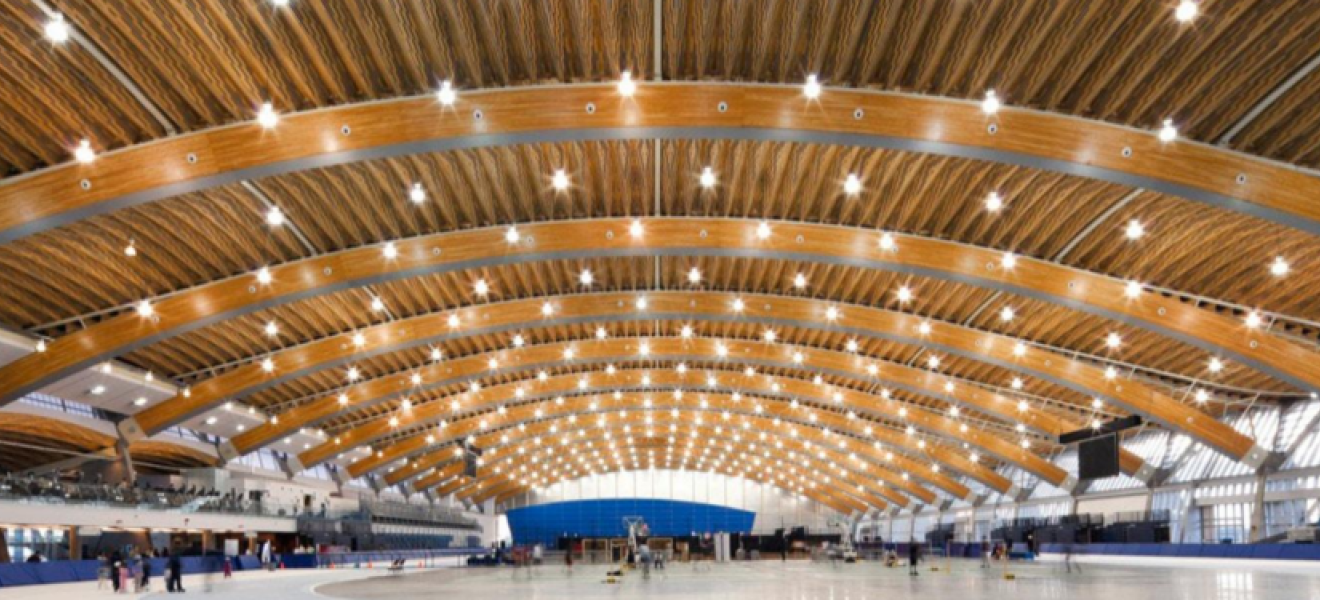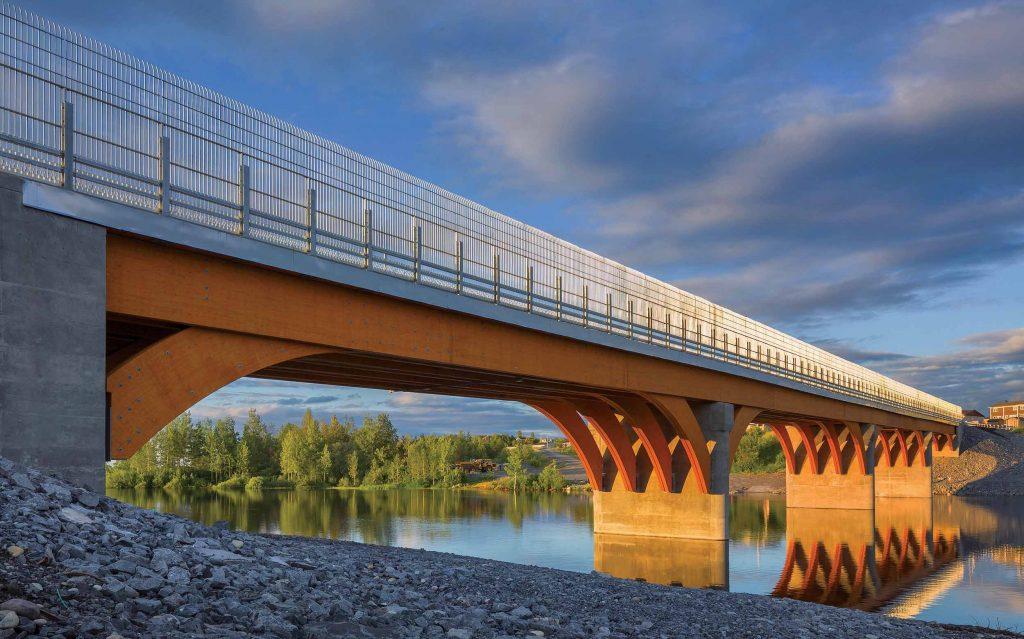Graduate Course Examines Mass Timber, One of Construction’s Hottest Materials

The Richmond Olympic Oval in Canada
Nasser Yari stood in his home office, virtually presenting a variety of images that showcase the use of mass timber—large solid wood panels for wall, floor and roof construction. One such image was of the Richmond Olympic Oval in British Columbia, an indoor arena with an impressive six-acre, all-timber roof (the largest of its kind in the world), its interior more resembling a cathedral than a sports stadium.
“Mass timber is considered the new steel,” said Yari, an assistant professor in Wentworth Institute of Technology’s Department of Civil Engineering and Technology.
Yari cites the 18-story Verdens Høyeste Trehus apartments in Norway, the intricately designed Bloomberg Building in London, the stacked-timber Odunpazari Modern Museum in Turkey and Montreal’s 524-ft. Mistissini Bridge as examples of mass timber structures.
Yari is preparing for “Structural Timber Engineering,” a graduate-level class being offered this fall. Registration is currently underway online.
Mass timber is one of the hottest trends in building because of its sustainable properties and ease of implementation at a construction site. Pieces are engineered ahead of time to fit perfectly into a structure (similar to a prefabricated house) and can be assembled at a much faster rate than traditional lumber.

“You can shape it any way you like, you can do anything with it,” said Yari of mass timber. “And there’s a push to use it because it’s lighter than steel or concrete, but just as strong.”
A concrete slab at six inches thick, for example, is 75 lbs. per square foot. Cross-laminated timber, a type of mass timber, is just 18 lbs. per square foot at the same thickness. But despite its lighter weight, mass timber is dense, charring and eventually burning at a much slower rate than traditional lumber.
And unlike steel, trees can be regrown. Yari explains that timber engineering must meet certain criteria set by the Sustainable Forest Industry, Forest Stewardship Council and other environmental groups to be harvested. Because it is engineered, mass timber wood may consist of smaller or diseased trees that would not normally make the cut.
Yari, who has more than 35 years of experience in the construction field, plans to cover a variety of topics in his class including an introduction to lumber, design loads, properties of wood and lumber grades, timber bridges, beam design, fire safety and ever-changing mass timber codes, among other topics.
“It’s a graduate course, but some students will have had experience with wood, some might not,” he says. “Mass timber is very hot right now and we see it as dominating the industry very soon.”
